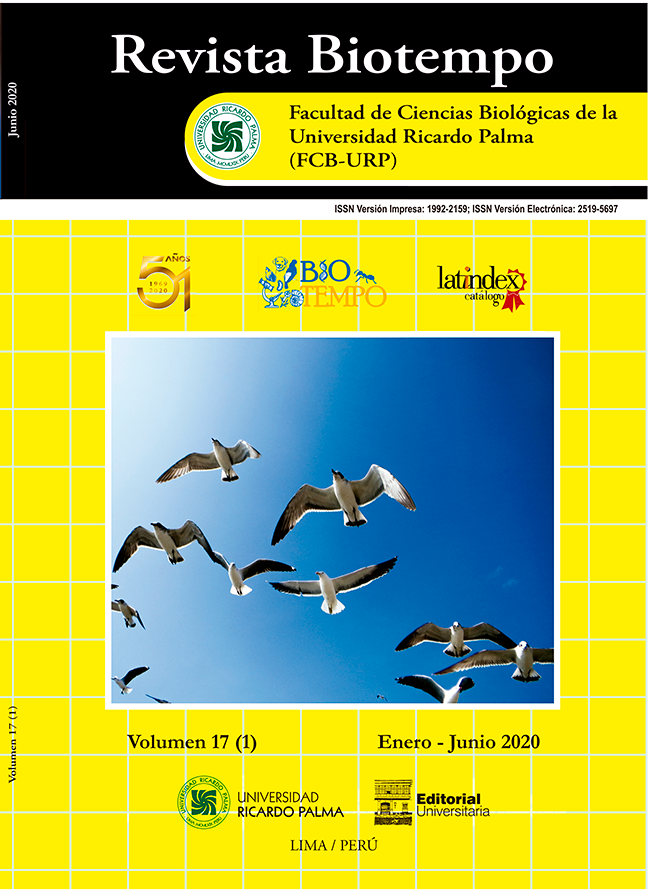TOXICITY OF THE BINARY MIXTURE OF METOMYL AND ROTENONE PESTICIDES ON DUCKWEED LEMNA MINOR (LINNAEUS, 1758)
DOI:
https://doi.org/10.31381/biotempo.v17i1.3058Keywords:
Binary toxicity, BMD, BMDL, EC50, individual toxicity, Lemna minor, methomyl, rotenoneAbstract
Macrophyte Lemna minor (Linnaeus, 1753) was used to evaluate the phytotoxicity of the individual and mixed action of methomyl and rotenone pesticides under laboratory conditions (Temperature 29 ± 2°C; Relative humidity 48.6± 9.4%). The taken measures to establish half eff ective concentration were the frond area (AF) and production of new fronds (NF). In this study, BMDS® and Probit statistical data analyses were used to compare the results about eff ective concentration. Results suggest Benchmark dose method of BMDS® program was more eff ective than Probit program when EC50 (mean Eff ective Concentration) were determined. Additionally, total chlorophyll concentration (TCC) and humidity weight (HW) parameters were calculated to determine the growth inhibition (Ir). Likewise, NOAEL (no observed adverse eff ect level) and LOAEL (low observer adverse eff ect level) were compared with BMDL (lower bench mark dose) and BMD (Bench mark dose), respectively. BMD and BMDL values were more accurate than NOAEL and LOAEL values. Phytotoxic action varied according the parameter. EC50 values of L. minor showed poor sensibility to methomyl pesticide with an elevated concentration in both parameters (6919.79 mg·L-1 and 7147.42 mg·L-1 for AF and NF, respectively). Results of rotenone pesticide were lower than methomyl, with 1079.22 mg·L-1 (NF) and 782.17 mg·L-1 (AF). Finally, the mix toxicity was 597.90 mg·L-1 (methomyl: NF), 298.93 mg·L-1 (rotenone: NF), 629.51 mg·L-1 (methomyl: AF) and 314.75 mg·L-1 (rotenone: AF). Finally, the concentration-addition model showed that the phytotoxic action of the mixture of both pesticides in L. minor has a synergistic eff ect.










